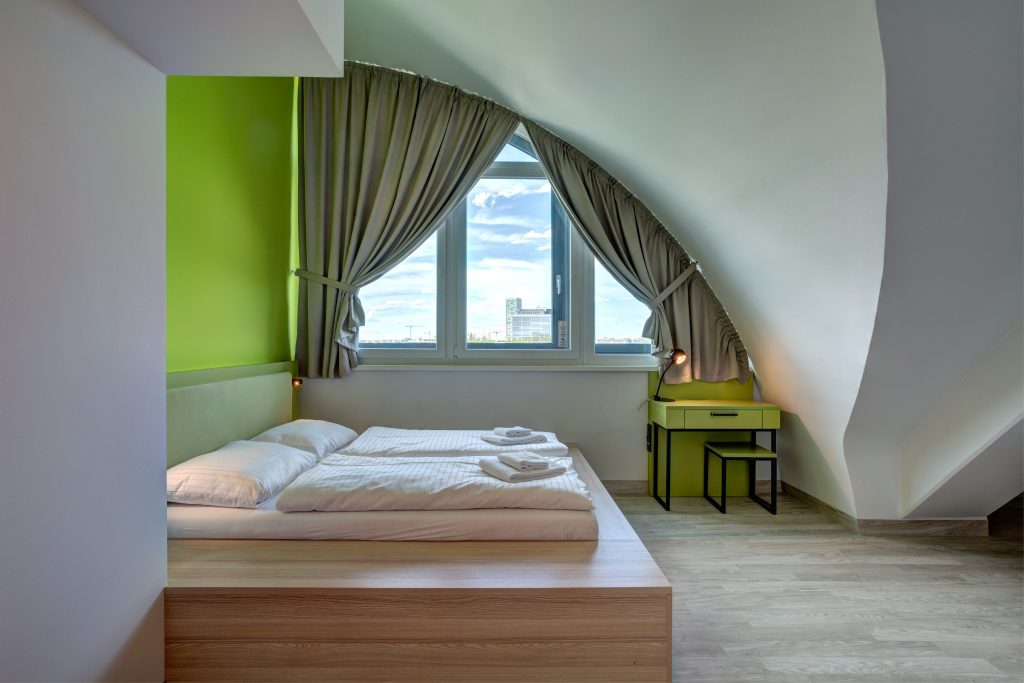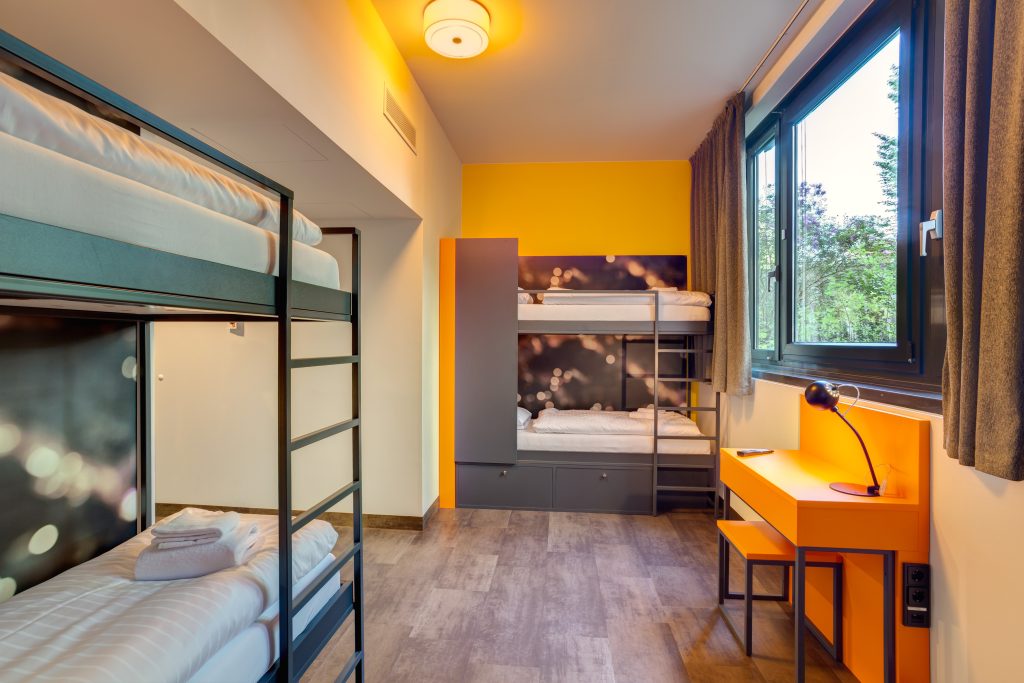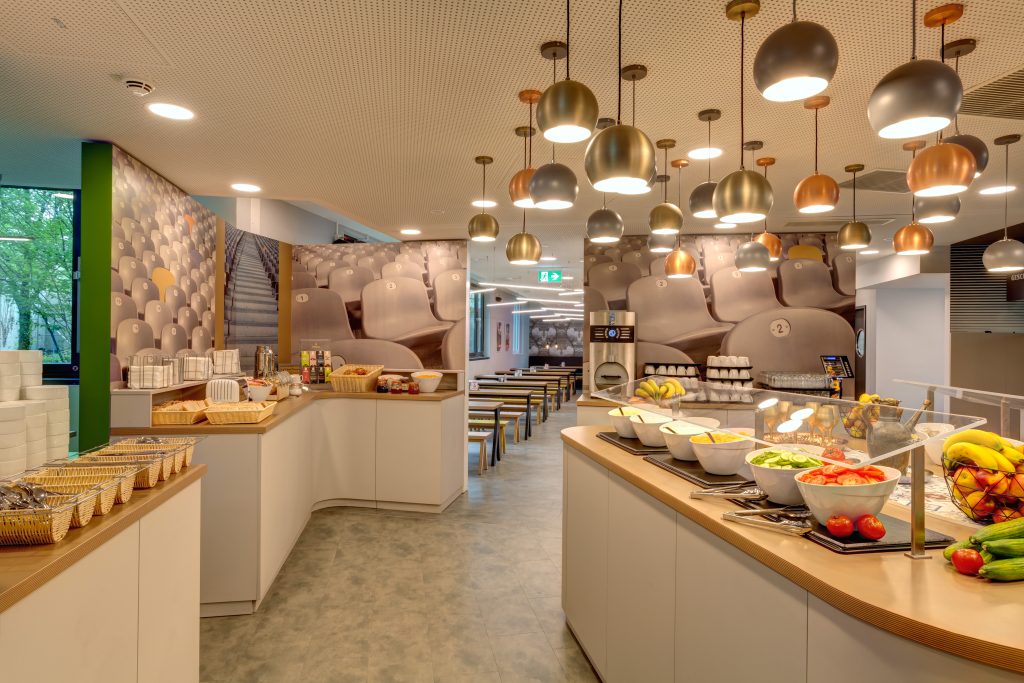Step back in time and uncover the fascinating history of Munich’s Oktoberfest! This world-famous beer festival has roots dating back to 1810 when it began as a royal wedding celebration. Over the centuries, Oktoberfest has evolved into a vibrant tradition, drawing millions of visitors to the heart of Bavaria each year. From its humble beginnings to its status as a global cultural phenomenon, discover how Oktoberfest has become synonymous with Bavarian heritage, hearty brews, and joyful festivities.
Curious about the origins and evolution of this iconic event?
Keep reading to dive into the rich history and lasting legacy of Oktoberfest!
Oktoberfest origins 
Once upon a time, a young royal couple in Bavaria, Crown Prince Ludwig (later King Ludwig I) and his fiancée Therese von Sachsen-Hildburghausen, were married on October 12, 1810. To thank their subjects for enduring wartime hardships, the royalty arranged a five-day festival. Children in traditional Bavarian folk costumes elebrated the newlyweds with poems and flowers. The festival ground was named “Theresienwiese” in honor of the bride, and the celebration concluded with a horse race on October 17.
Die Wiesn 
The festival site still bears the name Theresienwiese, and locals call it “die Wiesn.” The event was a big success, so it was repeated the following year. Over time, the annual Munich Oktoberfest grew in popularity. By the end of the 19th century, various entertainments were added, and breweries joined to form the festival we know today. The division of Munich Oktoberfest into “Wirtsbudenstraße” (party tents) and “Schaustellerstraße” (fairground) dates back to these early years.
With roughly six million visitors every year, Munich Oktoberfest is the largest folk festival in the world. It has managed to sustain its original charm, thanks in part to the mandatory Bavarian folk costumes.
How to tie the bow of your dirndl 
The bow of the dirndl reveals more than you might expect. The location of the bow conveys a secret code. To the left means the wearer is single. If the bow is worn on the right, the woman is married or “excused.” Tied in the middle signals that the wearer is a virgin, and on the back indicates that she is a widow.
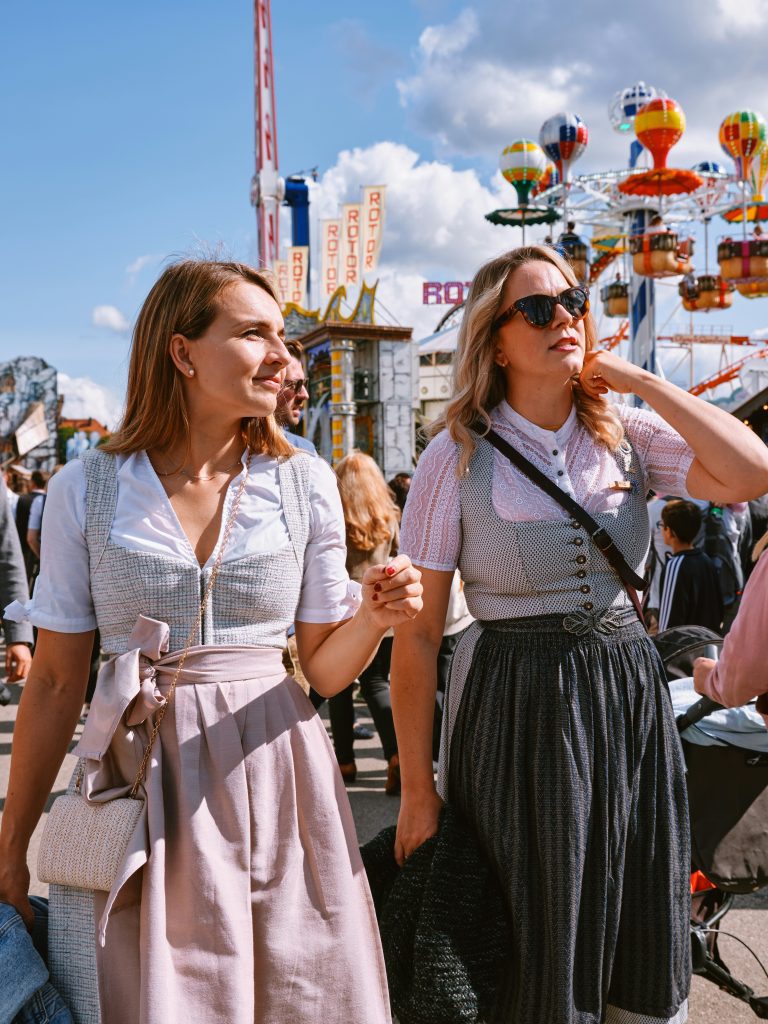
“O’zapft is“
On September 21, 2024, at exactly 12 PM, it will be time for the call of “O’zapft is” (“It has been tapped”) and the official opening of the 182nd Munich Oktoberfest. The tents will be open to the public from 9 AM, but no beer is served until the Mayor of Munich performs the first ritual tapping in the Schottenhammel tent. Before this, the hosts of the Wiesn gradually populate the grounds of Munich Oktoberfest, arriving on festively decorated horse-drawn carriages.
Many taverns anticipate Munich Oktoberfest more zealously than the Christmas season. To the locals, the Wiesn is much more than a huge beer feast. The people of Munich cherish the traditional details of Munich Oktoberfest. The fairground offers around 200 rides, from adrenaline rushes powered by modern technology to nostalgic attractions. Some families managing the individual rides have participated in Munich Oktoberfest since the beginning of the 20th century.
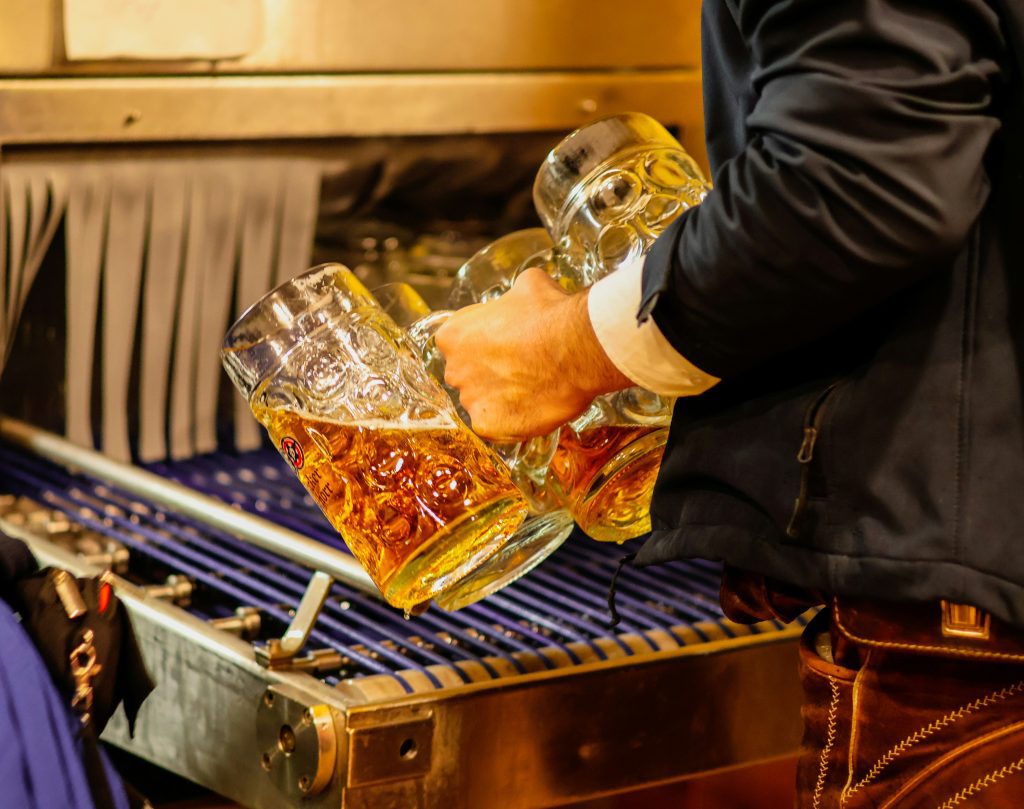


 Nothing beats a trio of Bavarian brews in hand, ready for a day of celebration and good times!
Nothing beats a trio of Bavarian brews in hand, ready for a day of celebration and good times!Oktoberfest specialties 
Feeling peckish? Try the beef sandwich “Ochsensemmel” in the Spatenbräu tent. At the entrance, you’ll see a sign informing you of the ox’s name, weight, and the number of previously consumed animals. To satisfy your sweet tooth, try the “Apfelkücherl” (deep-fried apple slices in a sweet dough). They’ve never tasted better than at Munich Oktoberfest.
If you take the scenic walk to the Bavaria statue, which offers a beautiful view of the Wiesn, you might hear the word “Löwenbräu” murmuring in the distance. Though you might be under the influence, the voices are real indeed. They originate from the Löwenbräu lions in front of the party tent, who occasionally raise their voices and roar “Löööwenbräu.” Löwenbräu is one of the six Munich breweries represented at Munich Oktoberfest. Tradition stipulates that only local beer can be served in the tents. The other resident breweries are Augustiner, Hacker Pschorr, Hofbräu, Spaten, and Paulaner.
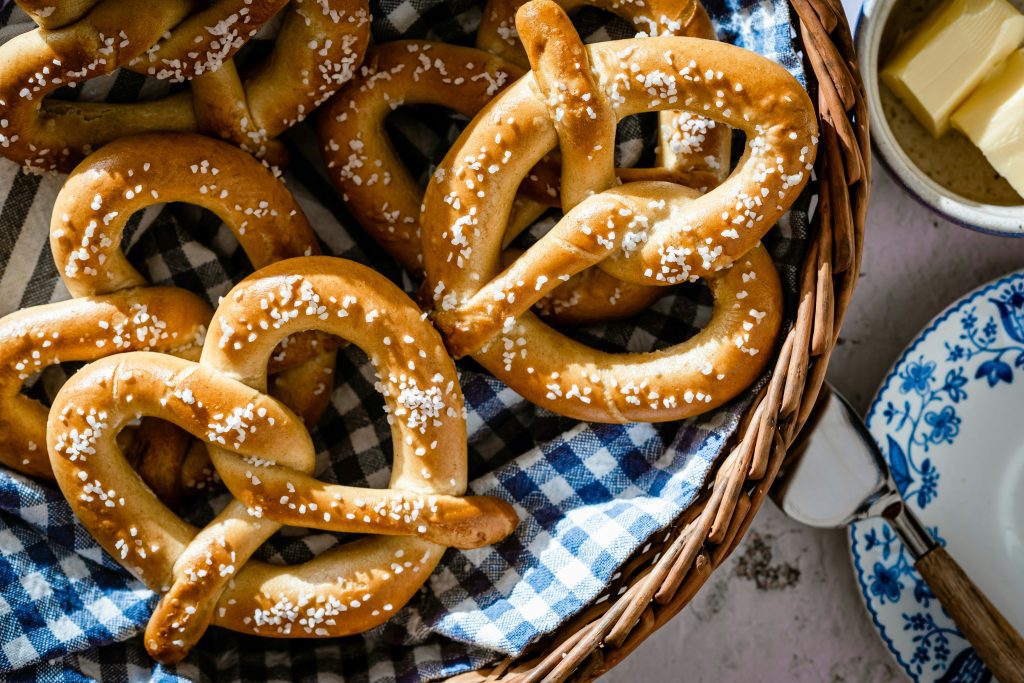
 Enjoy the iconic pretzels at Munich Oktoberfest – crispy on the outside, soft on the inside
Enjoy the iconic pretzels at Munich Oktoberfest – crispy on the outside, soft on the insideWhen darkness falls 
When darkness falls, experience classics like Toboggan and Teufelsrad. The Toboggan brings you skyward on a fast-moving conveyor belt, a highly amusing spectacle for the audience. Today, the Teufelsrad is a rarity at fairgrounds, but the question remains the same: who can stay on the rotating disc and avoid the ball the longest?
Why the Oktoberfest takes place in September
The simple reason is the German climate. In October, it is generally too cold for outdoor festivals, so in 1872, it was decided to move the celebration to September. Munich Oktoberfest always starts on the first Saturday after September 15, so this year it begins on September 21 and continues for 16 days until October 6. On the final Sunday, a romantic atmosphere takes hold of the tents. The end of Munich Oktoberfest is marked by a sea of light created by thousands of sparklers distributed to the guests.
Munich Oktoberfest – O’zapft is!: FAQs
Where to stay in Munich during Oktoberfest
Looking for the perfect place to crash during Oktoberfest? Check out the MEININGER Hotel München Olympiapark and MEININGER Hotel München Zentrum. Conveniently located close to the Theresienwiese, where all the Oktoberfest action happens, both hotels offer comfy and affordable rooms in the heart of this vibrant city. What are you waiting for? Pack your bags and get ready to immerse yourself in the beer tents, traditional Bavarian music, and festive atmosphere of Munich’s Oktoberfest!
MEININGER Hotel München Olympiapark
Address: Landshuter Allee 174, 80637 Munich
MEININGER Hotel München Zentrum
Address: Landsberger Str. 20b, 80339 Munich
